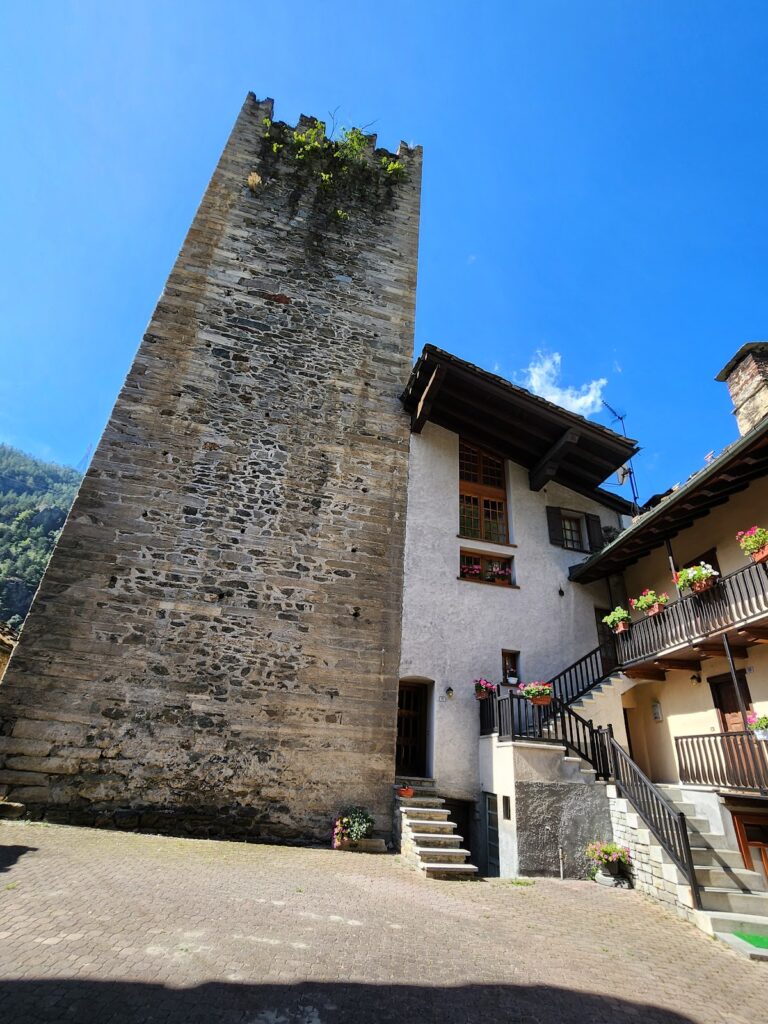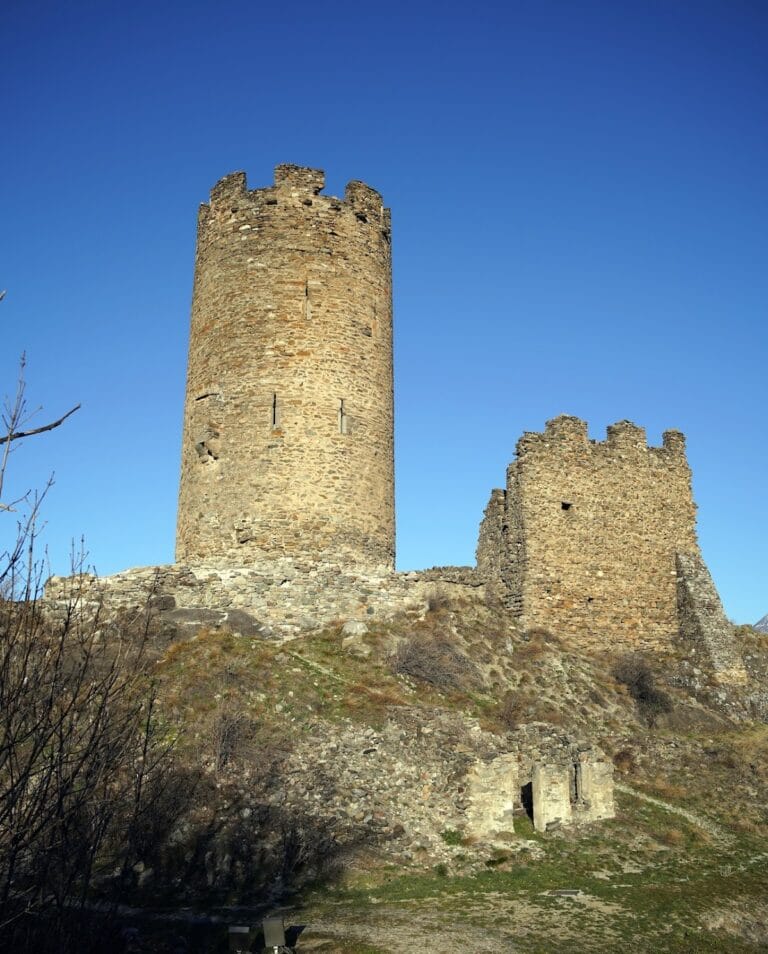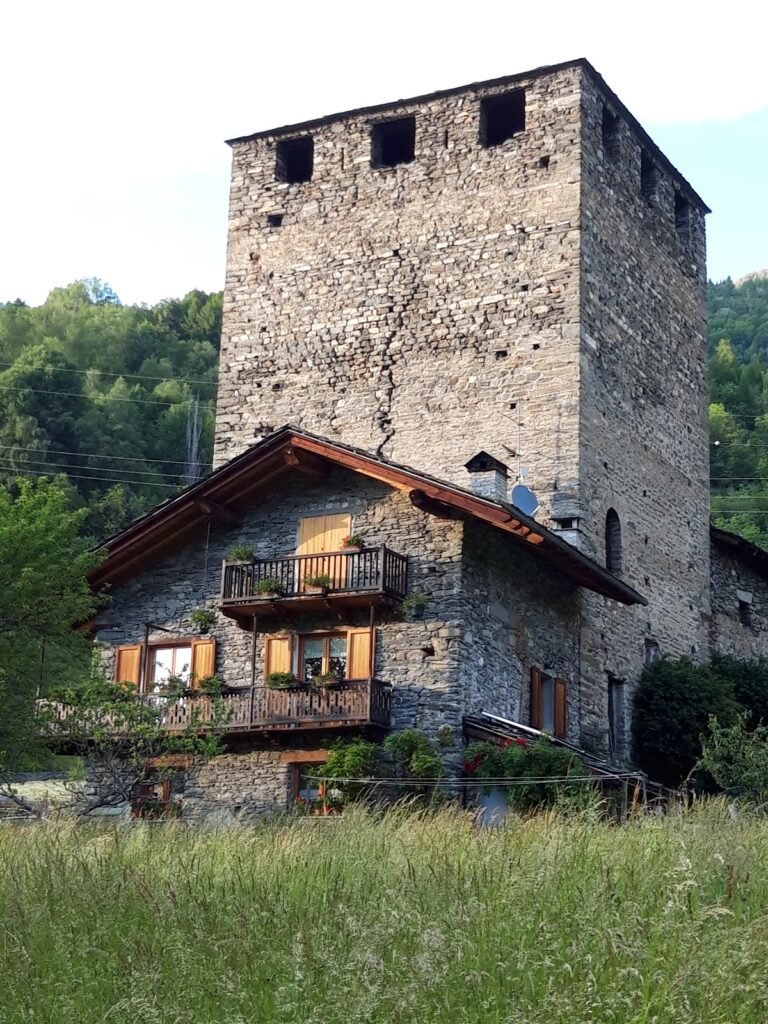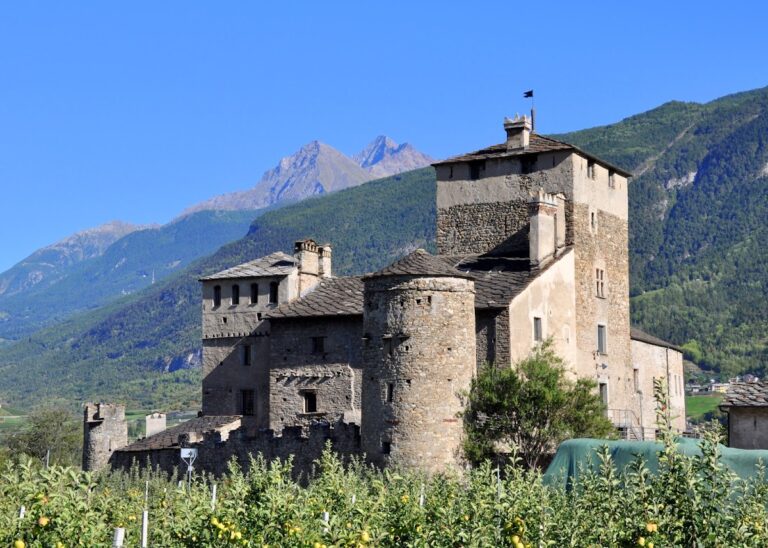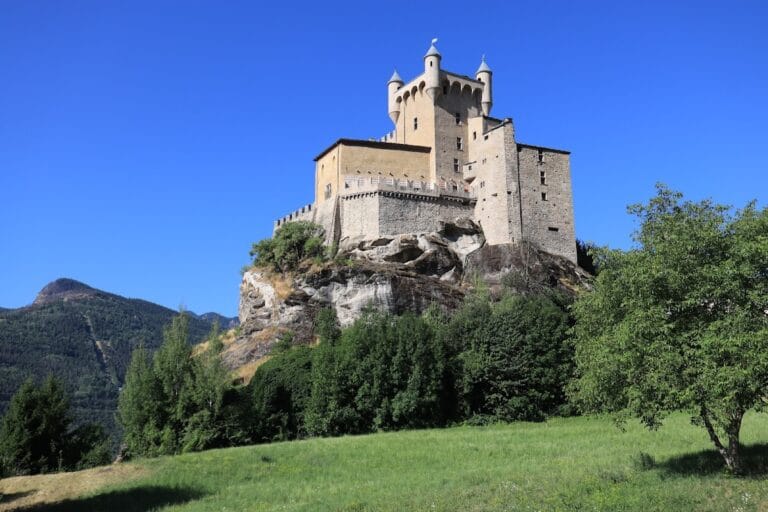Blonay Castle: A Medieval Fortress in Avise, Italy
Visitor Information
Google Rating: 4.2
Popularity: Very Low
Google Maps: View on Google Maps
Country: Italy
Civilization: Unclassified
Remains: Military
History
Blonay Castle is a medieval fortress located in the municipality of Avise, Italy. It was constructed by the local nobility and served as a residence and stronghold through several centuries of the region’s history.
The first phase of the castle dates back to the 12th century when a large square tower was built atop a hill within the village. This standalone tower followed the style of early castles found in the Aosta Valley and served both defensive and residential purposes. The tower was originally the sole structure on the site and was closely connected to the noble d’Avise family, who had settled in the area around that time.
In the 15th century, the castle complex expanded with the addition of a more spacious building attached to the south side of the tower. This extension reflected changing needs and tastes, moving beyond the austere military character of the initial tower to include larger and more comfortable living spaces. The castle thus evolved into a compound combining older defensive elements with newer residential architecture.
Ownership of the castle remained with the d’Avise family for many generations. In 1645, Prosper d’Avise, a senator in the Savoy Senate, passed the newer part of the castle to his nephews Claude and Josué de Blonay. These nephews were the sons of Marie d’Avise and Jacques de Blonay from the nearby region of Chablais. Following the death of their mother in 1649, Claude de Blonay was formally recognized as heir, marking the transfer of the castle into the hands of the de Blonay family, in whose possession it remained thereafter.
By the early 18th century, ownership of the castle was shared between the lords of Blonay and the remaining members of the Avise family, the latter of whom owned a newer castle elsewhere in Avise village. The last inheritor from the d’Avise line was François-Gaspard d’Avise, who came into possession of half of the fief according to a family testament from 1677; the other half was inherited by Claire-Marie d’Avise and her husband Charles-Joseph Bianco di San Secondo.
The tower gained a distinct secondary role as a prison during its history, earning the local name “prison tower.” In 1787, Philippe de Blonay explicitly claimed his exclusive feudal right to incarcerate criminals within the tower, reinforcing its function as a site of local authority and justice.
The castle was reported as no longer inhabited since 1980, marking the end of its continuous occupation.
Remains
Blonay Castle sits prominently on elevated ground within Avise village, close to the parish church of San Brizio. Its layout reflects medieval defensive architecture combined with later residential additions. The oldest and most striking part is the large square tower, which dates back to the 12th century. Constructed with thick defensive walls, the tower was designed to withstand attacks and served as a stronghold for its original owners. Its battlements feature swallowtail merlons—a type of crenellation shaped with distinctive forked tops—that indicate multiple construction phases and adaptation to evolving military needs.
The tower’s exterior faces currently show no visible arrow slits or doorways, though historically it stood isolated as a fortress typical of early castles from the Aosta region. Adjoining the tower on its southern side is a less severe, geometrically simple building added in the 15th century. This structure includes several cross-shaped windows with finely cut stone frames, indicating attention to both light and decorative detail uncommon in purely military construction. The adjoining parts of the complex were described as roomy and likely served as living quarters or administrative spaces associated with the castle’s noble residents.
The castle’s defensive features reflect its long-standing military role; the tower’s walls are significantly thicker than those of the newer attached buildings, highlighting the original function of the upper structure as a strong, self-contained fortification. The castle’s position near the church of San Brizio emphasizes its role within the village’s historic center, and its silhouette remains visible from nearby ruins such as those of Castello di Cré.
Historical records, including engravings from 1852 and photographic documentation from the 19th and 20th centuries, capture the castle’s appearance across centuries and attest to its preservation. The tower’s historical use as a prison, memorialized in local tradition, adds to the understanding of the castle’s multifaceted social and judicial roles within the feudal system. Today, Blonay Castle stands as a well-preserved example of medieval architecture layered with later adaptations, reflecting its continuous occupation and importance in the region’s history.

